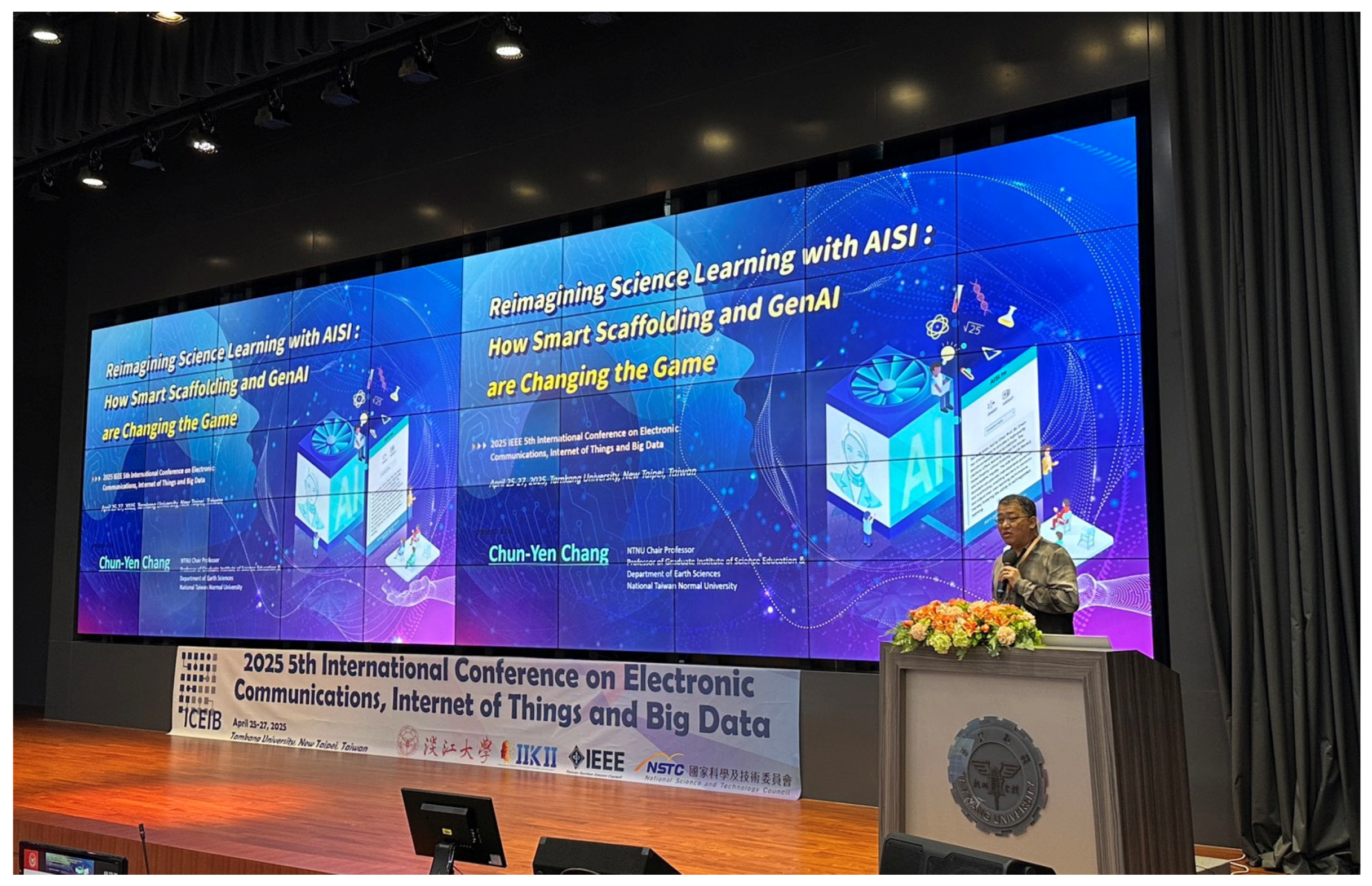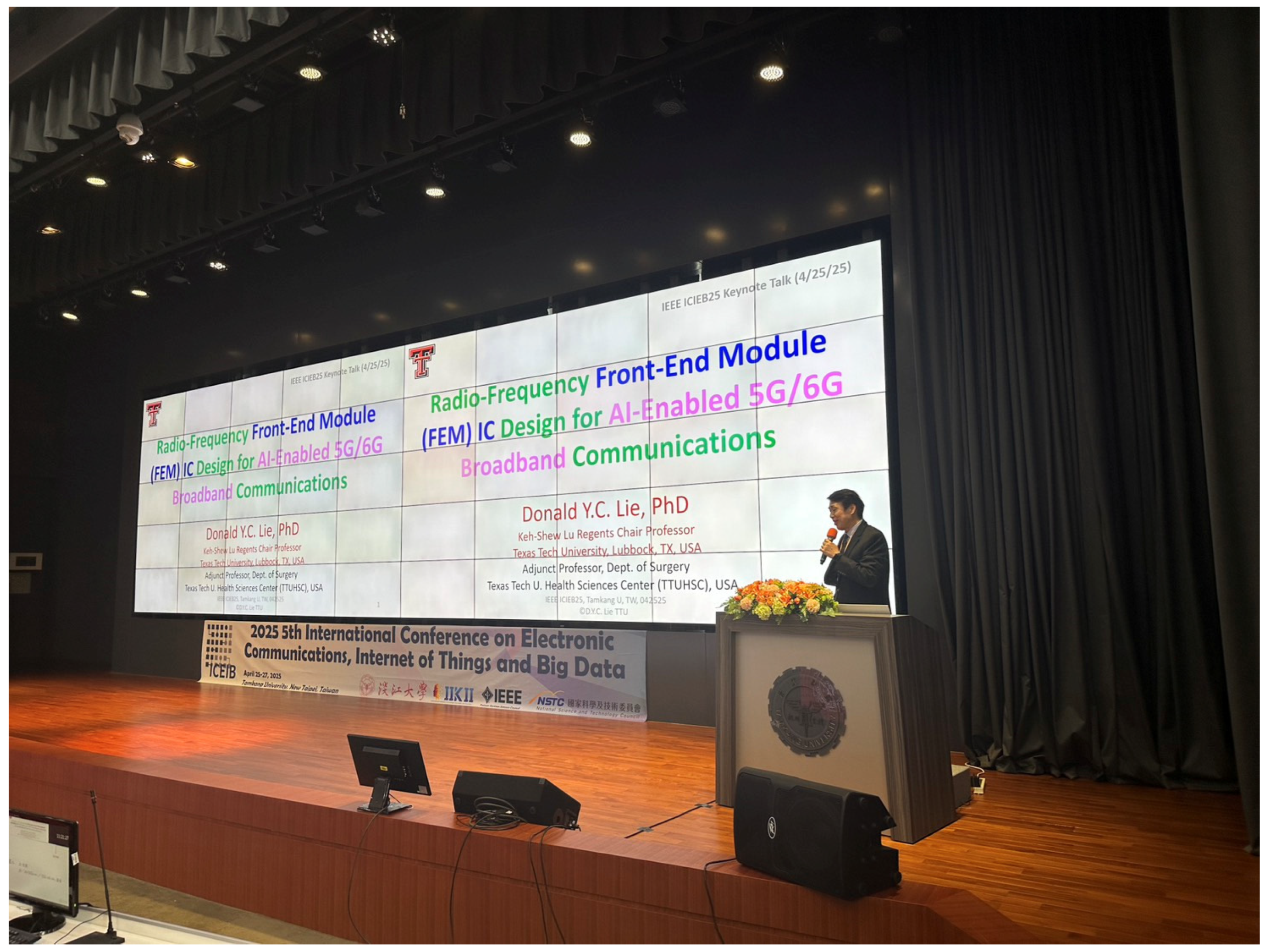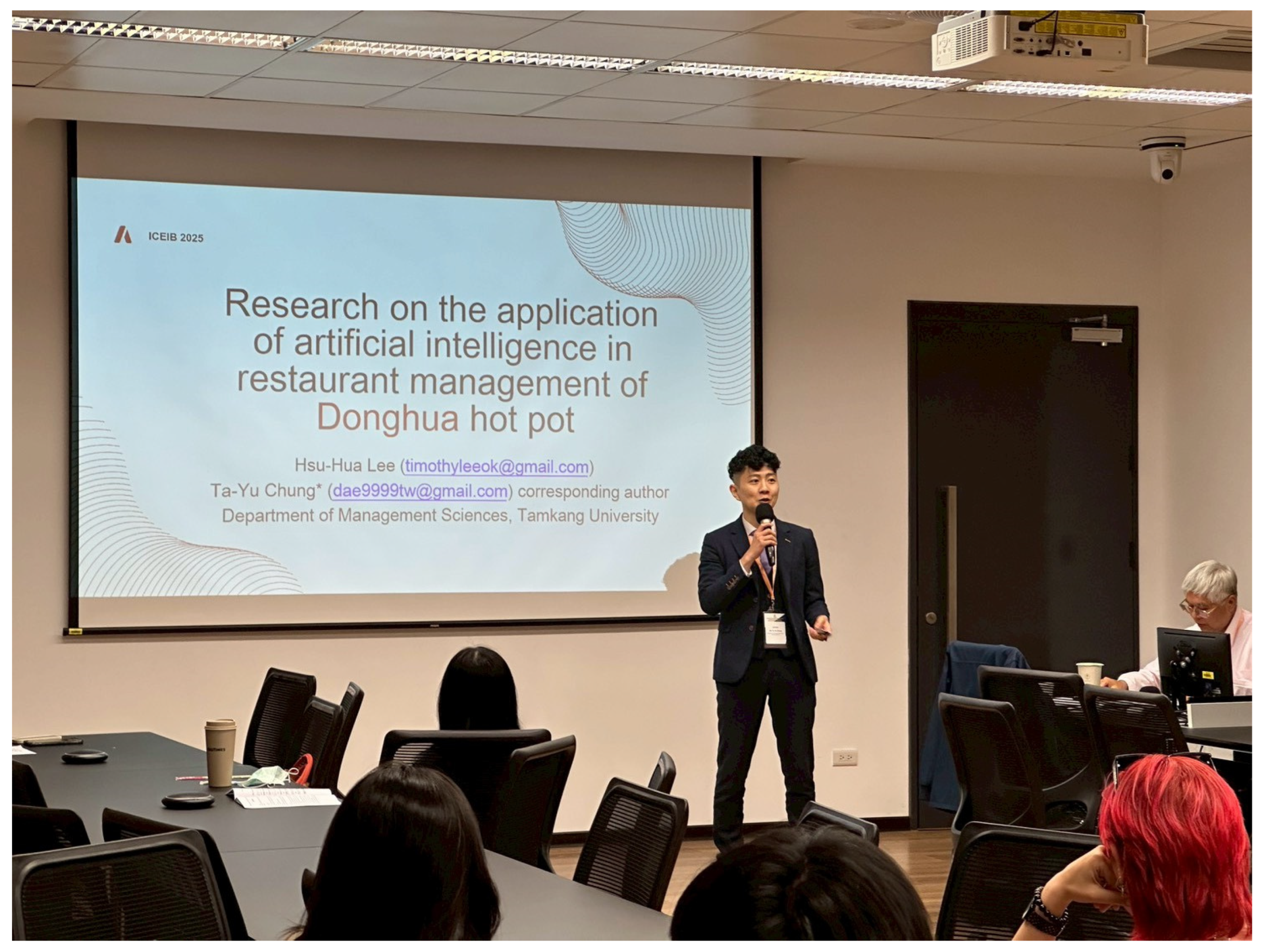This volume presents the proceedings of the 2025 IEEE 5th International Conference on Electronic Communications, Internet of Things, and Big Data (IEEE ICEIB 2025). This interdisciplinary conference was held for global scientists and engineers through a collaboration among Tamkang University, IEEE Tainan Section Sensors Council (IEEE TSSC), and the International Institute of Knowledge Innovation and Invention (IIKII). ICEIB 2025 provides a vital platform for researchers and high-tech professionals to share innovative ideas and practical applications in the fields of electronic communications, the internet of things, and big data. The booming economic development in Asia, especially the advanced technology in such areas, has attracted great attention from universities, research institutions, and companies from all over the world. The conference focused on innovative ideas and the results of their applications and enabled in-depth discussions, facilitating connections and realizing potential for future collaboration.
IEEE ICEIB 2025 offered on-site and online presentations in a hybrid form and a forum, receiving 154 submissions, with 109 papers finally selected and registered for the conference. The conference drew participants from 12 countries and regions, including China, Hungary, Indonesia, Japan, Korea, Macau, Malaysia, Oman, Poland, Taiwan, Thailand, and the Philippines, covering a wide range of topics, which were organized into five regular sessions and one invited session.
Figure 1 shows the group photo of the conference opening ceremony.
The conference featured two distinguished keynote speeches that highlighted the breadth and depth of the topics discussed.
The first was presented by Chair Professor Chun-Yen Chang from National Taiwan Normal University, Taiwan (
Figure 2). He shared compelling findings on the integration of AI with smart teaching strategies in classrooms across Taiwan, Indonesia, and India, where secondary students and pre-service teachers tackled science topics, such as climate change and energy sustainability. He introduced the Adaptive Interactive Study Interface (AISI,
https://aisi.tw)—a next-generation learning platform that embeds finely tuned GenAI-driven Scaffolding for Self-Regulation (GAISSR) into research-based scaffolding, instead of building new Large Language Models (LLMs) from scratch. AISI helps students think more deeply and manage their own learning, not just obtaining quick answers. When students received metacognitive prompts that helped to reflect on their thinking, they performed significantly better than peers who received cognitive-only or no scaffolds. Students’ trust in the structured AI-generated content provided by AISI enhanced their learning outcomes. Science teachers also benefited from using AISI and ChatGPT, as they obtained new insights into how GenAI fits into their teaching methods. Teachers reported enhanced awareness of AI’s strengths and limitations by using AISI, and many began thoughtfully weaving it into their lesson plans, not just for content delivery but for fostering critical thinking and AI literacy in the classroom. AISI plays a catalytic role for smart learning, empowered teaching, and human-centered science education.
Professor Donald Y.C. Lie from Texas Tech University, USA, delivered a speech on the design of broadband front-end module (FEM) integrated circuits (ICs) for millimeter-wave (mm-Wave) applications in the 5G FR2 band (e.g., 24 to 40 GHz) for various broadband millimeter waves (mm-Wave) (
Figure 3). Broadband mm-Wave 5G FEM ICs were designed in (a) a 22 nm fully depleted silicon-on-insulator (CMOS FD-SOI) process offered by GlobalFoundries (GF) and in (b) a 40 nm gallium nitride (GaN) high-electron-mobility transistor (HEMT) process offered by the Hughes Research Labs (HRL). A broadband RF FEM IC includes at least a broadband power amplifier (PA), a broadband low-noise amplifier (LNA), and a broadband single-pole double-throw (SPDT) switch. The performance of the broadband FEM ICs was simulated with post-layout parasitic extraction (PEX) and then evaluated by comparing simulated and measured data. Special emphasis was placed on the broadband mm-Wave PA design, as the PAs consume most power in an RF FEM IC, which deteriorates energy efficiency, heat dissipation, and the performance of a phased-array system. The FD-SOI CMOS PA achieved a saturated output power (
Pout_sat) of up to 14 dBm and peak power-added-efficiency (PAE) of up to 20% with a gain of 14 dB and 3 dB bandwidth (BW) from 19.1 to 46.5 GHz. The GaN PA, on the other hand, achieved P
out_sat of up to 24 dBm and peak PAE of up to 20% with a gain of 20 dB and 3 dB BW from 19.9–35.2 GHz in measurement. The measured data of both PAs aligned with the PEX electromagnetic (EM) simulations. The EM PEX simulation results of a 3rd Watt-level GaN PA were also presented. Data from these PAs were used to estimate how many FEM ICs are needed to build a broadband transmitter (Tx) phased array, targeting a fixed equivalent isotropic radiated power (EIRP) specification. Assuming each antenna element is operated by one FEM IC and each phased array targets the same 65 dBm EIRP specification, the mm-Wave phased arrays using the Watt-level GaN PAs with stacked PA topology and FEMs achieve roughly two times wider half power beam width (HPBW), with a four-fold reduction in the array size compared with the arrays using all-silicon FEM ICs. Therefore, with the significantly larger HPBW, the hybrid “silicon + GaN” approach considerably alleviates the thorny mm-Wave LOS blocking problems. The increase in HPBW for mm-Wave antenna arrays with fewer GaN FEM ICs leads to an eight-time reduction in channel numbers, and with improved system robustness of LOS-blocking compared with that of an all-silicon array in 22FDX. Additionally, cost-saving benefits are obtained due to reduced channel elements, especially if the GaN on silicon technology is matured to reduce the cost of GaN dies. Finally, as the commercial success of mm-Wave 5G/6G mobile handsets depends largely on the improvements in the FEM/PA power efficiency, linearity, reliability, robustness, and cost, heterogeneous IC integration techniques need to combine III-V RF FEM ICs, memories, and silicon ICs to enable advanced computing using AI (artificial intelligence) and realize AI-Enabled 5G/6G broadband wireless communications with high performance and cost effectiveness.
In the on-site and online oral presentation sessions of IEEE ICEIB 2025, the prominent results were shared and discussed with enthusiastic participation from the attendees (
Figure 4 and
Figure 5). A total of 53 papers relevant to the fields of engineering and education were selected through a rigorous peer-review process for publication in this volume of
Engineering Proceedings (ISSN: 2673-4591, indexed by Scopus). The proceedings serve as a valuable reference for researchers and practitioners, accelerating interdisciplinary collaboration among scientists and engineers from academic and industrial institutions.











